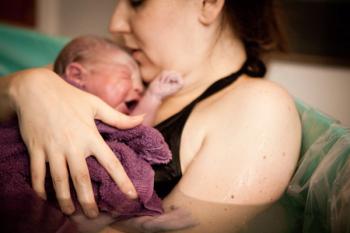
Legally Speaking
Risk management in obstetrics and gynecology
Maternal injury from shoulder dystocia
A 32-year-old New York woman in her last month of pregnancy presented to her physician for an ultrasound in 1998. The physician estimated the fetal weight to be between 8 and 9 lb and gave the patient the options of going to full term, having a cesarean section, or undergoing labor induction for impending macrosomia. The patient chose the latter option. The next day, she was admitted to the hospital and given dinoprostone; the day after, she was given oxytocin.
At delivery, the baby weighed 8 lb, 10 oz and had a nuchal cord wrapped twice around his head and a shoulder dystocia. The nuchal cord was reduced and a McRoberts maneuver and suprapubic pressure were employed to relieve the dystocia. The mother was diagnosed with diastasis of the symphysis pubis.
The physician denied any deviation from the standard of care, claimed that an episiotomy was performed, and all maneuvers were done appropriately. The jury returned a defense verdict.
Complications from laparoscopy
A New York woman underwent a laparoscopic oophorectomy performed by her gynecologist as treatment for an ovarian cyst. After surgery, the woman complained of foot drop and said that her gait remained affected despite physical therapy, and that she is clumsy.
The woman filed a lawsuit, asserting that the surgery was unnecessary because the cyst was benign, the procedure took too long, and the physician malpositioned her leg in a frog position during the surgery. The latter act, the patient claimed, led to compression of the superficial peritoneal nerve and the foot drop.
The physician denied negligence and claimed that the patient's condition was a known complication of the procedure. The jury returned a verdict in favor of the patient for $25,800.
Fetal demise from uterine rupture
An Illinois woman was hospitalized for severe abdominal pain during her 32nd week of pregnancy in 1999. She had a history of two previous myomectomies and was at risk for uterine rupture. She was placed on an external FHR monitor, and underwent two U/S that day, which showed no abnormality.
During the day and into the evening, the patient's heart rate increased, her hematocrit dropped, and her pain increased despite medication. She also experienced "coffee ground" emesis. When the woman was last seen by one of her two obstetricians, at about 4 PM, the FHR was reassuring. The physicians received updates from the nurses until 11 PM and believed that the mother was suffering from a degenerating fibroid or a gastrointestinal process. During the early morning, the fetus was found to have died in utero due to uterine rupture. It was then determined that the FHR monitor had been picking up the mother's heart rate, not the fetus's, through the late evening and morning hours.
A lawsuit was filed, alleging that if the physicians had returned to the hospital when they were notified about the mother's worsening condition, they would have discovered the problem with the monitor strips and been able to deliver the infant before it died.
The physicians claimed that the nurses should have realized that the maternal and fetal heart rates were the same and should have taken steps to ensure that it was the FHR that was being monitored. The jury found in favor of the physicians after the hospital settled for $650,000.
Alleged miscalculation of insulin injections
An Illinois woman received prenatal care from a family clinic in 1997. Two residents and an attending physician diagnosed gestational diabetes and prescribed a daily dose of insulin for the woman. She went to a clinic for training on diet and insulin injections by a diabetes educator. During a return visit to ensure that she was properly drawing and injecting her insulin, the log of blood sugars that she kept over the weekend was examined and she was found to have properly followed her medication regimen. The following Monday, the woman was found dead on her apartment floor. At autopsy, the cause of death was found to be accidental insulin intoxication.
Newsletter
Get the latest clinical updates, case studies, and expert commentary in obstetric and gynecologic care. Sign up now to stay informed.















